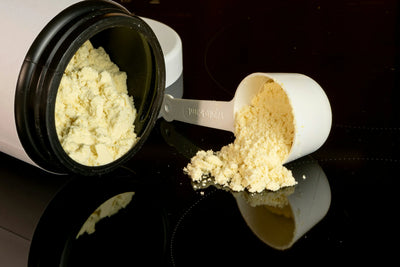Introduction
The Pitbull is deeply loved by dog lovers for its loyal, brave and energetic personality. However, this short-haired dog breed often faces the problem of dry skin due to its unique genes and living environment. Dry skin not only makes pit bulls uncomfortable, but may also cause itching, flaking and even infection.
Understanding and Treating Pitbull Dry Skin
As a responsible dog owner, it is crucial to understand the causes, treatment methods and preventive measures of dry skin in pit bulls. Through scientific care and meticulous daily management, we can help pit bulls regain smooth and healthy skin, allowing them to continue to accompany us in the best condition. This article will provide you with a comprehensive guide, delving deeply into the causes and solutions to the problem of dry skin in pit bulls.

Common Causes of Dry Skin in Pit Bulls: from Allergies to Genetics
The dry skin problem of pit bulls may be caused by a variety of factors. Understanding these causes can help us find the right treatment direction. The following are several common "behind-the-scenes drivers" :
Allergic reaction
Pit bulls are relatively sensitive to allergens in the environment (such as pollen and dust mites) or food components (such as proteins in chicken and beef). These allergies may cause itchy, redness, swelling and dryness of the skin. Dogs will scratch frequently, aggravating the skin problems.
Parasitic infection
Flea allergic dermatitis (FAD) is a frequent visitor to canine skin diseases. Pit bulls are particularly prone to allergic reactions to flea saliva. Even a single flea bite can cause severe itching. In addition, mite infections (such as scabies mites) can also cause redness, dryness and hair loss of the skin.
Insufficient nutrition
Zinc-reactive dermatitis is a common skin problem in pit bulls, usually caused by insufficient zinc content in the diet or poor absorption. This situation can lead to dry skin, flaking, and even the appearance of hardened patches. A deficiency of nutrients such as Omega-3 fatty acids or vitamin E may also weaken the protective barrier of the skin.
Environmental factors
The short fur of pit bulls exposes their skin directly to external irritants such as grass, pollen or chemical cleaners. Dry weather, frequent exposure to detergents or excessive bathing can all deprive the skin of its natural oils, leading to dryness and discomfort.
Genetic factors
Some pit bulls may inherit some skin diseases, such as Ichthyosis. This disease can cause abnormal dryness and flaking of the skin, and even form a scaly appearance, seriously affecting the comfort and appearance of dogs.
Effective Methods for Treating Dry Skin in Pit Bulls: from Diet to Medication
Once the pit bull's skin shows signs of dryness, itching or flaking, it is particularly important to take timely treatment measures. The following are some scientific and effective treatment methods, ranging from dietary adjustments to drug intervention:
Adjust your diet and supplement nutrients
Increase Omega-3 fatty acids: Fish oil or dog food rich in Omega-3 can enhance the skin barrier and reduce inflammation and dryness. Adding an appropriate amount of salmon oil or flaxseed oil is a good choice.
Ensure zinc and vitamin E: Choose high-quality dog food rich in zinc and vitamin E, or supplement the relevant nutrients under the guidance of a veterinarian.
Screening for food allergies: If food allergies are suspected, a food exclusion test lasting 8 to 12 weeks can be conducted to gradually identify the allergen.
Choose mild bath products
Using fragrance-free dog shampoo containing oat ingredients can effectively relieve itchy and dry skin. For severe cases, veterinarians may recommend medicinal shampoos containing antibacterial or antifungal ingredients. Rinse thoroughly after taking a bath to avoid any residue irritating the skin.
For local care, moisturizing comes first
Moisturizing products: Moisturizing sprays or lotions containing coconut oil, vitamin E or aloe vera can lock in skin moisture and relieve dryness.
Local itching relief: For mild itching, hydrocortisone spray or coconut oil can be applied, but it is necessary to prevent the dog from licking.
Control parasites
Fleas and ticks are the "invisible killers" of dry skin. Using preventive medications recommended by veterinarians throughout the year (such as oral medications or drops) can effectively reduce allergic reactions caused by parasites.
Optimize the living environment
Clean the bed and toys: Regularly wash the pit bull's mattress, blanket and toys to reduce dust mites and allergens.
Wipe the body: After walking the dog, wipe the PAWS, abdomen and back with a damp towel to remove pollen or grass shavings.
Air purification: Using an air purifier indoors can reduce the concentration of allergens, especially during the pollen season when the effect is remarkable.

Noora Skin & Coat Health Supplement
Drug treatment is for severe conditions
For stubborn allergies or infections, veterinarians may prescribe the following medications:
Antihistamines or corticosteroids: used to control severe itching and inflammation.
Antibiotics or antifungal drugs: For secondary skin infections, ensure rapid recovery.
Daily Care for Preventing Dry Skin: Details Determine Health
Prevention is better than cure. Through scientific daily care, we can significantly reduce the occurrence probability of dry skin in pit bulls. The following are some practical suggestions:
Comb your hair regularly
Use a soft-bristled brush or rubber grooming tool to comb the pit bull 1-2 times a week. This can not only remove loose hair, but also promote the even distribution of skin oil and enhance the skin's protective power.
Avoid taking excessive baths
Excessive bathing can wash away the natural oils on the skin. It is recommended to bathe your dog every 4 to 6 weeks, or adjust according to its activity level. Always use mild dog shampoo and make sure to rinse thoroughly.
Maintain the indoor humidity
In a dry winter or in an air-conditioned room, using a humidifier to maintain a humidity of 40% to 60% can effectively prevent dry skin.
Regular skin check-ups
Check the pit bull's skin every week and pay attention to whether there is redness, swelling, flaking, abnormal odor or scratching behavior. Early detection of problems can significantly reduce the difficulty of treatment.
Keep in communication with the veterinarian
Take your pit bull for regular check-ups, update preventive medications in a timely manner, and consult a veterinarian for any skin issues. Personalized care plans can benefit dogs a lot.
The dry skin problem of pit bulls may be caused by various factors such as allergies, parasites, nutritional deficiencies, environment or genetics. However, through scientific treatment and meticulous daily care, these problems can be completely alleviated or even prevented. From adjusting the diet, choosing mild bath products, to optimizing the living environment and regular check-ups, every step reflects our love and responsibility towards our dogs. Before attempting any treatment or preventive measures, be sure to consult a veterinarian to ensure that the plan is safe and effective.
Healthy skin is not only the guarantee of a pit bull's comfortable life, but also a manifestation of their vitality and charm. Let's use scientific methods and meticulous care to help pit Bulls bid farewell to the trouble of dry skin, shine with a healthy glow, and accompany us through more happy times!
Best Dry Dog Food for Pitbulls with Skin Allergies
Pit bulls have won the hearts of countless dog lovers with their loyalty and vitality, but skin allergies often cause these furry friends to suffer from itching and discomfort. Pollen, food or irritants in the environment may make the skin of pit bulls sensitive, and even cause redness, swelling and flaking. Although commercially available dog food is convenient, it often contains potential allergens and is difficult to meet the special needs of pit bulls with sensitive skin. Homemade dry food has become an ideal choice, allowing the owner to precisely control the ingredients, avoid allergens, and at the same time provide the dog with a balanced and nutritious diet. This article will provide you with homemade dry food recipes suitable for pit bulls with skin allergies, as well as key nutritional suggestions, to help your furry friend regain healthy and smooth skin and enjoy every day with a wagging tail!
Key Nutritional Advice: Lay A Solid Foundation for Skin Health
When designing a diet for pit bulls with skin allergies, a balanced diet is the core. The following are some indispensable nutrients that can effectively relieve allergic symptoms and promote skin repair:
Omega-3 and Omega-6 fatty acids
These healthy fats are the "protective umbrella" of the skin, which can reduce inflammation, relieve itching and make the fur shinier. Fish oil, salmon or flaxseed oil are excellent sources of Omega-3. Adding an appropriate amount to food has a remarkable effect.
Antioxidant
Antioxidants from fruits and vegetables, such as vitamins C and E, can enhance a dog's immune system and alleviate allergic reactions. Blueberries, broccoli or carrots are all good choices. They are both delicious and healthy.
Easily digestible and hypoallergenic protein
Chicken, beef and mutton are common allergens. It is recommended to choose hypoallergenic protein sources such as Turkey, venison or rabbit meat. These proteins are mild and easy to digest, reducing the possibility of skin irritation.
Soluble fiber
Sweet potatoes, pumpkins and other ingredients are rich in soluble fiber, which can promote intestinal health and improve digestion, thereby indirectly alleviating skin itching and inflammation.
By scientifically combining these nutrients, homemade dry food can not only meet the daily needs of pit bulls but also become a "secret weapon" for skin health.
Homemade Dry Food Recipe: Delicious and Hypoallergenic
Here are five homemade dry food recipes specially designed for pit bulls with skin allergies. They are easy to make and balance nutrition and taste. All formulas avoid common allergens to ensure that your dog can eat with peace of mind.
1. Turkey and sweet potato delicacies
Ingredients:
- 1 cup of cooked and mashed Turkey meat
- 1/2 cup of mashed sweet potatoes
- 1/4 cup of cooked peas
- 1 tablespoon of olive oil
Production method:
Mix the Turkey meat, sweet potato puree and peas thoroughly in a large bowl.
Drizzle with olive oil and stir well to ensure even distribution of the oil.
The food can be fed after it cools down to an appropriate temperature.
Highlights: Turkey is a low-sensitivity protein, sweet potatoes provide fiber and vitamins, olive oil supplements healthy fats, and gently moisturizes the skin.
2. Mix salmon with quinoa
Ingredients:
- 1/2 cup of cooked salmon (shredded)
- 1/2 cup of cooked quinoa
- 1/4 cup of steamed cooked carrots (chopped)
- 1/4 cup of steamed green beans (chopped)
Production method:
Put the salmon, quinoa, carrots and green beans in a bowl and stir well.
Make sure all the ingredients are evenly mixed and can be fed after cooling.
Highlights: Salmon is rich in Omega-3, quinoa is a hypoallergenic carbohydrate, carrots and green beans provide antioxidants, and comprehensively care for the skin.
3. Cod and vegetable stew
Ingredients:
- 1.75 pounds of boneless cod fillets
- 3 cups of potatoes (diced)
- 1.5 cups of green beans
- 1.5 cups of mung beans
- 2 cups of water
- 2 tablespoons of coconut oil
Production method:
Fry the cod in a non-stick pan with 1 tablespoon of coconut oil for 3-5 minutes on each side until thoroughly cooked. Remove and set aside.
Mash the potatoes, green beans and mung beans in a food processor, transfer them to a pot, add water and boil for 5 to 7 minutes until they become soft.
Tear the cod into small pieces and put them back in the pot. Add the remaining coconut oil and stir to make a thick stew.
Feed after cooling.
Highlights: Cod is mild and hypoallergenic, coconut oil moisturizes the skin, and vegetables provide fiber and trace elements.

4. Stewed mutton and lentils
Ingredients:
- 1/2 cup of cooked and mashed mutton
- 1/4 cup of cooked lentils
- 1/4 cup of mashed sweet potatoes
- 1/4 cup of chopped zucchini
Production method:
Mix the mutton, lentils, sweet potato puree and zucchini in the pot.
Simmer over low heat, stirring occasionally, and heat to an appropriate temperature.
Feed after cooling.
Highlights: Lamb and lentils provide high-quality protein and fiber. Zucchini is mild and easy to digest, making it suitable for sensitive stomachs.
5. Turkey, quinoa and vegetable feast
Ingredients:
- 3 pounds of minced Turkey (at least 85% lean meat)
- 2 tablespoons of coconut oil
- 4 ounces of kale (stem removed and chopped)
- 1 pound of carrots (diced)
- Two cups of raw quinoa
- Five cups of low-sodium bone broth (or water)
- Two cans of 4.5-ounce water-soaked sardines
Production method:
Stir-fry the minced Turkey in an Instant Pot with 1 tablespoon of coconut oil until it turns light brown, then mash it into small pieces.
Add the kale and stir-fry for 3 to 4 minutes until soft. Then add the carrots and bone broth.
Cover the pot and set it to manual mode for 4 minutes. After it's cooked, let the pressure release naturally for 20 to 30 minutes.
After cooling, stir and add the sardines. Make sure the temperature is appropriate before feeding.
Highlights: Sardines and Turkey provide dual protein, kale is rich in antioxidants, and bone broth adds flavor and nutrition.
Precautions: Safety and Balance are Given Equal Importance
Although homemade dry food is flexible, the following points need to be paid special attention to in order to ensure the health of your dog:
Strictly avoid allergens
Common allergens include chicken, beef, dairy products, eggs, wheat, soybeans and corn. When choosing ingredients, carefully check the labels to ensure they do not contain these components.
Ensure a balanced diet
Homemade dry food should contain an appropriate amount of protein, carbohydrates, fat, vitamins and minerals. Long-term use of a single formula may lead to nutritional imbalance. It is recommended to rotate different formulas and regularly supplement vitamins specifically for dogs.
Consult a veterinarian
Each pit bull has a different constitution and allergic condition. Before starting to make your own diet, be sure to consult a veterinarian to ensure that the formula meets your dog's nutritional needs. Veterinarians can also recommend suitable supplements or allergy tests.
For pit bulls with skin allergies, homemade dry food is a considerate and effective choice. By carefully selecting hypoallergenic ingredients, focusing on the supplementation of Omega-3 and antioxidants, and following scientific formulas, we can provide dogs with a diet that is both delicious and skin-nourishing. These homemade dry foods can not only relieve itching and dryness, but also make the pit bull's fur shiny and full of vitality. Before trying any new diet, communicating with a veterinarian is an indispensable step to ensure that every bite of food contributes to your dog's health.
With love and care, customize a healthy meal exclusively for your pit bull! Watching them wag their tails and happily lick the delicious food in the bowl, you will find how worthwhile this effort is!
Effective Treatments for Pitbull Dry Skin
The Pitbull, with its strong physique and loyal character, has become a beloved companion in many families. However, their short hair and sensitive skin often cause dry skin problems as a nuisance. Dry, itchy, red, swollen and even infected skin not only makes pit bulls uncomfortable, but may also affect their lively nature. The causes of dry skin are complex and may involve allergies, parasites, malnutrition or environmental factors. As the owner of a beloved dog, understanding how to scientifically treat and prevent dry skin problems is the best protection for your furry friend's health. This article will provide you with a detailed introduction to the effective treatment methods for dry skin in pit bulls, addressing the root cause to help your dog regain smooth and healthy skin and wag its tail to welcome each day!
The Causes of Dry Skin: Multiple Factors Interweave
The dry skin problem of pit bulls may be caused by various reasons. Accurately identifying the cause is the first step in treatment. The following are several common "culprits" :
Allergic reaction
Allergy is a common cause of dry skin in pit bulls, which may come from food (such as chicken and beef) or the environment (such as pollen and dust mites). Allergies can cause itching, redness, hair loss and even secondary skin infections.
Parasitic infection
Fleas, ticks and mites are the "invisible killers" of skin problems. Flea allergic dermatitis (FAD) is particularly common. Even a single flea bite can cause severe itching and skin redness and swelling.
Bacterial or fungal infection
Skin inflammation, scabs or secretions may be signs of bacterial, yeast or fungal (such as tinea) infections. These infections are often caused by allergies or parasites and require timely intervention.
Malnutrition
A deficiency of zinc, Omega-3 fatty acids or vitamin E may lead to dry and cracked skin, hair loss and frequent infections. Pit bulls have a relatively high demand for zinc, and an unbalanced diet may trigger zinc-reactive dermatitis.
Other skin diseases
Special skin problems such as poor follicular development, sebaceous gland inflammation or Cushing's disease (an endocrine disorder) may also cause dry skin. These diseases usually require professional diagnosis and long-term management.
Environmental factor
Dry weather, frequent bathing or exposure to irritating cleansers may deprive the skin of its natural oils, exacerbating dryness and itching.
Effective Treatment Methods: From the Root Cause to Daily Care
In view of the complex causes of dry skin in pit bulls, treatment needs to be comprehensively considered, combining scientific methods and personalized plans. The following are several effective treatment strategies:
1. Dealing with allergies: Cut off the irritation from the source
Food allergy: Allergens are identified through hypoallergenic diets or Elimination diets. Gradually eliminate common allergens such as chicken, beef and wheat, and observe the improvement of symptoms. High-quality hypoallergenic dog food (such as those mainly consisting of Turkey or venison) is a good choice.
Environmental allergies: Reduce the chances of dogs coming into contact with pollen and dust mites. Regularly clean mattresses and toys, and use an air purifier to reduce the concentration of indoor allergens. After going out, wipe the dog's PAWS and abdomen with a damp towel to remove any remaining pollen.
Drug assistance: A veterinarian may prescribe antihistamines (such as diphenhydramine or cetirizine) to relieve itching, or use corticosteroids (oral or topical) for a short period to control inflammation. Note that corticosteroids should be used with caution to avoid long-term side effects.
2. Eliminate parasites: Cut off the source of itching
Fleas and ticks: Use preventive products recommended by your veterinarian (such as drops or oral medications) throughout the year. For dogs that have already been infected, shampoos containing antibacterial and antifungal ingredients (such as Malaseb) can effectively clean the skin and relieve symptoms.
Mite infection: Veterinarians may prescribe prescription drugs such as ivermectin and recommend medicinal baths for treatment. Adhere to the treatment cycle to ensure the complete elimination of mites.
3. Treat infections: Quickly restore skin health
Bacterial and yeast infections: Use medicinal shampoos containing chlorhexidine or miconazole (such as Malaseb) to clean the skin, and combine them with antibiotics or antifungal drugs to quickly control the infection.
Fungal infections (such as tinea) : Specific antifungal drugs (such as itraconazole) are required, and combined with medicinal baths and environmental disinfection to prevent the spread.
4. Optimize nutrition: Moisturize the skin from the inside out
Balanced diet: Choose high-quality dog food rich in zinc, vitamin E and Omega-3 fatty acids. Avoid low-quality grains containing fillers or artificial additives, as these may interfere with zinc absorption.
Supplementing fatty acids: Adding an appropriate amount of fish oil or flaxseed oil every day can significantly improve the skin barrier, reduce inflammation and dryness.
Professional supplement: For zinc-reactive dermatitis, a veterinarian may recommend zinc supplements, which must be used strictly in accordance with the dosage.
5. Special skin diseases: Personalized management
Dysplasia of hair follicles: Although it cannot be cured completely, the use of medicinal shampoos (such as Davis Sulfur Benz containing sulfur or benzoic acid) can prevent secondary infections. Supplementing with vitamin A, nicotinamide or Omega-3 fatty acids can help improve symptoms.
Sebaceous gland inflammation: By combining antibacterial moisturizing shampoo and immunomodulatory drugs, inflammation and sebum secretion can be controlled.
Cushing's disease: After being diagnosed through blood tests, medication (such as triloxostat) or surgical treatment may be required. The specific plan is determined by a veterinarian.

6. Daily care and prevention: Details determine health
Regular grooming: Use a soft-bristled brush or rubber grooming tool to comb the pit bull's fur every week to remove dead skin and loose hair and promote oil distribution.
Keep the skin moist: Use a humidifier during dry seasons to maintain an indoor humidity of 40% to 60% to prevent excessive dryness of the skin.
Avoid allergens: Try to minimize your dog's exposure to known allergens, such as grass or chemical cleaners. Clean your body in time after going out.
Regular check-ups: Check your dog's skin every month, paying attention to redness, swelling, flaking or abnormal odors. Early detection of problems can significantly reduce the difficulty of treatment.
Control the frequency of bathing: Take a bath every 4 to 6 weeks. Use a mild dog shampoo (such as one containing oat ingredients) to avoid damaging the skin's natural oils.
Working with Veterinarians: Personalized Solutions are Key
The dry skin problem of pit bulls varies from individual to individual, and the treatment effect depends on precise diagnosis and scientific treatment plan. It is crucial to establish close cooperation with veterinarians. Veterinarians can determine the root cause of dry skin through skin swabs, allergy tests or blood tests, and formulate targeted treatment plans. Whether it is adjusting the diet, choosing medicinal shampoo, or using prescription drugs, the professional guidance of a veterinarian can make the treatment twice as effective with half the effort.
Although the dry skin problem of pit bulls is complex, it can be completely alleviated through scientific treatment and meticulous daily care. From identifying allergens and eliminating parasites to optimizing diet and environmental management, every step contributes to the dog's health. Daily grooming, moderate bathing and regular check-ups are the "long-lasting shield" for preventing dry skin. During the treatment process, always maintain communication with the veterinarian to ensure the safety and effectiveness of the treatment plan.
Healthy skin not only makes pit bulls more comfortable, but also gives them a unique charm. Let's use love and science to create a world free from itching and worries for these loyal partners, watching them run and play energetically, and spending more wonderful times with us!





